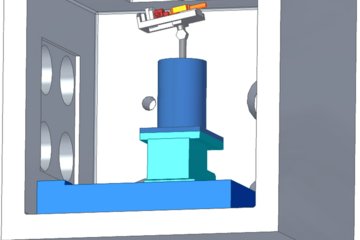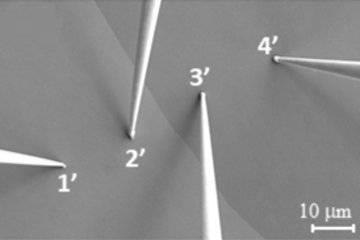All genres
1.
Journal Article
Electron and chemical reservoir corrections for point-defect formation energies. Physical Review B 93 (16), 165206 (2016)
2.
Journal Article
Quasiparticle band offsets of semiconductor heterojunctions from a generalized marker method. Physical Review B 84 (19), 193304, pp. 1 - 4 (2011)
3.
Journal Article
Construction and performance of fully numerical optimum atomic basis sets. Physical Review B 84 (8), 085101, pp. 1 - 11 (2011)
4.
Journal Article
Native and hydrogen-containing point defects in Mg3N2: A density functional theory study. Physical Review B 81, 224109, pp. 1 - 10 (2010)
5.
Journal Article
Water adsorption on hydrogenated Si(111) surfaces. Surface Science 603 (1), pp. 60 - 64 (2008)
6.
Talk
Quantitativly optimized atomic orbitals (QUAMOLs) - SxQuamol. 1st International S/PHI/nX Developers Convention, Erkrath, Germany (2012)
7.
Talk
Point-defect energetics from LDA, PBE, and HSE: Different functionals, different energetics? 1.st Austrian/German Workshop on Computational Materials Design, Kramsach, Tyrol, Austria (2012)
8.
Talk
Defect distributions at III-nitride interfaces from ab-initio-based thermodynamic data. DPG spring meeting, Regensburg, Germany (2010)
9.
Talk
Constructing fully numerical, quantitatively optimized atomic orbitals basis-sets. DPG Frühjahrstagung 2010, Regensburg, Germany (2010)
10.
Talk
Fully numerical orbitals as an analyzable Tight Binding Basis Set. Computational Materials Science on Complex Energy Landscapes Workshop, Imst, Austria (2010)
11.
Talk
Highly p-doped GaN:Mg! What hinders the thermal drive-out of hydrogen? 2. Klausurtagung des Graduierten Kollegs: Mikro und Nanostrukturen in der Optoelektronik, Bad Karlshafen, Germany (2009)
12.
Talk
Role of the parasitic Mg3N2 phase in post-growth activation of p-doped Mg:GaN. DPG Frühjahrstagung, TU Dresden, Germany (2009)
13.
Talk
Band dispersion effects in supercell calculations for defects. Computational Materials Science Workshop, Ebernburg Castle, Germany (2008)
14.
Poster
Constructing optimized atomic basis-sets with PW accuracy. Psi-k Conference 2010, Berlin, Germany (2010)
15.
Poster
Constructing optimized atomic basis-sets with PW accuracy. Summer School: Computational Materials Science, San Sebastian, Spain (2010)
16.
Poster
Role of the parasitic Mg3N2 phase in post-groth activation of p-doped Mg:GaN. ICNS-8, Jeju Island, South Korea (2009)
17.
Poster
Role of the parasitic Mg3N2 phase in post-growth activation of p-doped Mg:GaN. CECAM Workshop 09: Which Electronic Structure Method for the Study of Defects?, CECAM-HQ-EPFL, Lausanne, Switzerland (2009)
18.
Thesis - PhD
Limitierungen der p-Dotierbarkeit von Galliumnitrid: Eine Defektstudie von GaN:Mg auf Basis der Dichtefunktionaltheorie. Dissertation, Universität Paderborn, Paderborn, Germany (2012)











